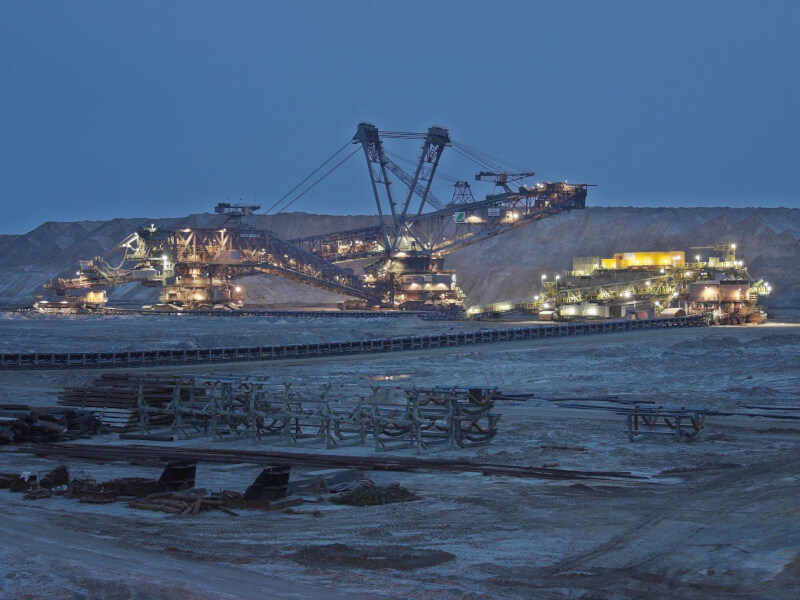10 May 2024 – Global material use has more than tripled since 1970 – from 30 billion tons to 106 billion tons a year. And it is taking a heavy toll on our planet.
The extraction and processing of fossil fuels, metals and minerals, food production and forestry together account for 60% of the generation of greenhouse gases, just over 90% of the loss of biodiversity and 40% of particles in the air that are a threat to health. At the current rate, material extraction will increase by at least another 60% by 2060.
This will make it practically “impossible to stabilize the climate system and stop the further decline of many vital ecosystems”, according to a recent report, Global Resources Outlook 2024, from the International Resource Panel.
I am one of 33 expert members of the panel, whose mission is to provide independent, coherent and authoritative scientific advice on the sustainable use of natural resources, and on how to decouple economic growth from environmental degradation.provindependent, The problem is compounded by the large differences in resource use: while material footprints (the amount of raw materials extracted to meet final consumption demands) exceed 20 tons per capita a year in high-income countries, in low-income countries it is around 3-4 tons. Meanwhile, low-income countries generate about a tenth of the greenhouse gases contributed by high-income countries, on a per capita basis.
The report’s conclusion is that the material footprints of the rich countries must be reduced over time – both to meet climate and environmental goals and to give people in the low-income countries a fair chance to increase their share of the resource space.
The climate debate has so far mostly been about phasing out fossil fuels. This report convincingly shows that if the use of materials is not taken much more seriously, it will be impossible to reach climate goals.
Efforts to make production greener are important, but they must be combined with powerful measures on the demand side, mainly in high-income countries. Consumer behavior is of crucial importance. But as important will be to rethink the business models and consumption systems that dominate today.
The main challenge for high-income countries is to reduce the resource-intensity of their economies. Today’s consumer culture, where many products have a short lifespan – fast fashion and consumer electronics are but two examples – and where most materials are only used once before being discarded, must be fundamentally changed.
The long-term goal should be “absolute decoupling” – implying that economic growth may happen while the amount of resource use and/or environmental impact is decreasing. At the same time, the increased use of resources in low-income countries must be made as efficient as possible through an effort towards “relative decoupling”.
When looking at material throughput there are primarily four areas that stand out in high-income countries: transport and mobility, energy, housing and infrastructure and food and nutrition. The development in these areas is characterized by a series of “lock-ins”, such as high car dependency in urban environments, ever-heavier vehicles, extensive food waste, and poor utilization of premises.
The transformation of the energy system presents special challenges. The necessary transition to electricity is dependent on a number of key materials. If current trends continue, demand for copper, cobalt and nickel is forecast to increase by 350% or more until 2035, while demand for lithium may increase by as much as 1200% by 2050.
Given the serious environmental impacts of mining, and the 10-year period it takes to open a new mine, trying to meet exponential demand like this could endanger the energy transition.
In addition, the richest ores have already been exploited, which means that energy use during mining will gradually rise.
The Global Resources Outlook report includes a series of proposals where people’s needs are provided in far more intelligent ways than today.
The focus is on reducing waste and overconsumption, speeding up a transition from linear to circular material flows, extending product life, giving priority to systems for reuse and renovation and a transition to a service economy, where products become services.
A transition from linear to circular materials would facilitate the energy transition and make it considerably cheaper. Today, for example, only 1% of lithium is recycled. The potential is therefore great to establish a reliable supply of recycled materials.
According to the report, optimizing systems such as urban mobility and the utilization of housing and premises can reduce energy demand globally by around 50% by 2060 (compared to business as usual). In addition, optimizing mobility would reduce the annual demand for copper in transport by around 60%.
The report proposes a series of reforms. These include the establishment of an international resource agency that can continuously monitor and propose measures for a more efficient and fair use of resources.
It also proposes tax reforms so that taxes on resource extraction are raised, while taxes on human labour are lowered.
Commodity market legislation should to be tightened to avoid a race to the bottom in terms of environmental and social standards.
Finally, as much as possible of the value of the material extraction and processing should remain in the host country.
First published on Reuters






